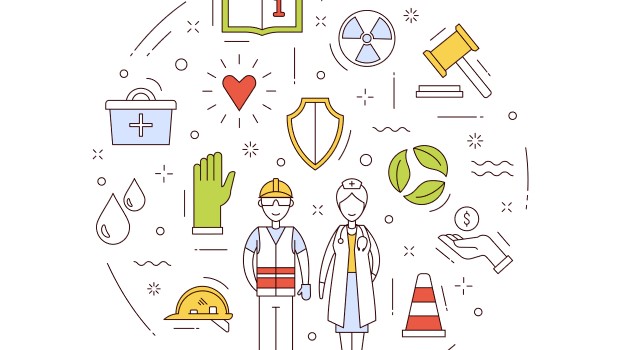In this guest blog, Ian Mulhall makes the case for why, and how, the railway and other transport sectors can do more to promote occupational hygiene and prevent work-related long-term illness.

Safety evidently matters on Britain’s railway. The British railway is recognised as one of the safest rail systems in operation. This success is the result of a long-term focus on improvement and a multi-pronged approach: a drive to ensure that highly competent people lead safety performance projects; closer collaborative efforts between businesses; adopting improved health and safety management systems; and an industry push to recognise the application of new technology whenever possible.
In a similar fashion, the rail industry is continuing its journey to improve the health and wellbeing of its workforce, and continues to consider how can it work towards achieving genuine parity between the management of health and safety, and to achieve the industry’s Healthier Rail vision.
Recent changes
The current occupational landscape of industry is constantly changing, with the range of health risks in the workplace evolving and becoming more varied than ever. For example, in February 2019 the Health & Safety Executive (HSE) released a safety bulletin about a change in enforcement expectations for mild steel welding fumes. This responded to research highlighting that all welding fumes should now be considered carcinogenic, rather than just stainless-steel fumes as before (this also resulted in the HSE updating their welding guidance resources).
In 2020, HSE updated the guidance document EH40 – Workplace Exposure Limits, in response to new health data, and soon we may also see new workplace exposure limits and considerations for diesel engine exhaust emissions. With new scientific research and greater knowledge, this constant evolution means we have to be able to understand and react to new risks.
Proactively preventing occupational ill health
We have an opportunity within the transport industry to become proactive in the prevention of occupational ill health.
If we consider how we monitor exposure to harmful substances and environments as businesses, we currently recognise various lag measures. We register the physical damage to the people we are responsible for through health monitoring and surveillance – or worse through employee liability claims, RIDDOR reports, or enforcement actions. Many occupational ill health issues, such as noise-induced hearing loss, various cancers, and lung diseases, can sometimes have a period of latency and only become evident months, years or decades after exposure. Let’s consider ways that we can proactively look for leading indicators.
In the most recent edition of the HSE Health and Safety at Work statistics, last year UK industries saw 13,000 individuals lose their lives in ways believed to be linked to past exposure at work, primarily to hazardous dusts and chemicals – and 12,000 of these were linked to lung diseases. In the same period, 111 fatal injuries to workers in the UK were reported through RIDDOR.
This is where I believe occupational hygiene practitioners can help industry to proactively protect worker health and wellbeing. Occupational hygiene is primarily centred around preventing ill health from work through the scientific discipline of anticipating, recognising, evaluating, and controlling health hazards in the working environment. It has the objective of protecting worker health and wellbeing while safeguarding the community at large.
Improving and saving lives with occupational hygiene
Good occupational hygiene can be life-changing – even life-saving – for the workforce, and benefits industry too. It results in:
- improved worker health and increased life expectancy
- fewer people who must leave employment early through injury or illness
- lower social and healthcare costs
- maximised worker potential
- more efficient working processes with technological improvements and increased productivity.
Occupational hygienists have a broad knowledge across many disciplines, from personal exposure measurement to strategic approaches for managing health hazards. The engagement of the occupational hygiene profession provides a scientific response to these threats. It allows us to be proactive, start at the beginning and consider the occupational hygiene risks in our industry, recognising our history, cultures, and climate.
We want to help improve understanding of the risks from personal exposure to hazardous substances and physical environments that have the potential to cause occupational disease.
This improved awareness and understanding, plus accurate scientific knowledge, will allow occupational hygiene practitioners and businesses to identify the most suitable and sufficient guidance, tools, and best practices to help mitigate current risks and avoid future ones.
As well as enabling companies to comply with legal requirements and reduce costs, it can prevent illness and injury and improve the quality of life and long-term health of colleagues.
Reporting insight
Confidential reporting can work hand in hand with the profession, by helping practitioners to hear from the people who are most affected by health hazards. Confidential reports can reveal health concerns plus identify new and developing trends, or where measures to mitigate occupational ill health are not working in practice, so that approaches to a healthier workforce can evolve.
At a time where it is clearer than ever that health and safety challenges can be unpredictable, we can learn and focus on what good occupational health means for us all. Health matters because lives matter.
Find out more
Protect yourself: what is occupational hygiene and why does it matter?
Tags
- Health and Wellbeing
- Person's Environment
- Culture

